Home / Past Newsletters / June 2012
June 2012
In this issue:
What's new...
New cold process soapmaking kits: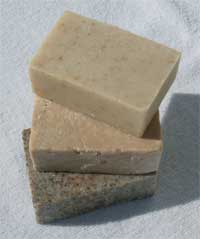
We have created five new kits with intriguing ingredients:
Mini melt and pour kits:
Our new shell mould needed a kit - so we've made a mini version, which will make three charming shells. The fragrance is palmarosa, which (in my experience) appeals to everyone!
Heart of roses is now available as a mini kit, which makes three gorgeous pink soaps.

New moulds:
Six new soap moulds are arriving any minute. Meet our new favourite, the sheep. We've made him in goatsmilk white, and in black with white face and feet (irresistible!). On the website soon!

Chelsea acting in Dunedin:
Another shameless plug for Chelsea!
For those of you in and around Dunedin in July, think about having night out at the Fortune Theatre and see Chelsea performing in ‘In the Next Room (or The Vibrator Play)’.
Argan oil or Moroccan Oil?
We have a strange new problem: people are thinking that argan oil and Moroccan Oil are the same thing.
But they are quite distinct!
Argan oil is a vegetable oil pressed from the crushed fruit of the argan tree, which grows in south-west Morocco.
Moroccan Oil is a brand (actually spelled Moroccanoil on the label) with products that contain a variety of ingredients (including some argan oil) and are marketed in New Zealand as hair and body care products.
There are other (expensive) products that use 'argan oil' in their name - but it's not clear how much argan oil is in their formulation.
A website offering ‘independent’ advice on Moroccan oil, www.moroccanoilingredients.org,
offers this information:
'The ingredients that are in Moroccanoil products are
cyclopentasiloxane, dimethicone, cyclomethicone, butylphenyl methylpropional, argania spinoza kernel oil, linseed extract, fragrance supplement, Yellow-11, C Red-17, coumarin, benzyl benzoate and alpha-isomethyl ionone.'
(We take no responsibility for the accuracy or otherwise of this list!)
In this list you’ll see argania spinoza. This is argan oil.
Pure, unprocessed argan oil is a very different thing. Argan oil in its natural state is full of nourishment, containing a wide range of vitamins, fatty acids and other ingredients.
Our certified organic argan oil is one of our most popular items, with people appreciating its wonderful moisturising properties and the way it soothes and heals inflamed skin, and keeps hair frizz under control.
We import our argan oil directly from a Moroccan women’s cooperative, and it has had minimal processing. It is quite different from Moroccan Oil!
Be warned! Tell your friends! Go Native organic argan oil is not Moroccan Oil – it is something full of life and liveliness!
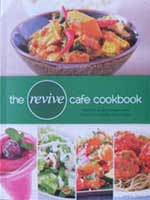 The winner of the draw:
The winner of the draw:
The Revive vegetarian cookbook, along with the two babassu butter products and rosehip oil balm featured in our last newsletter, went to a thrilled Adrienne Browne.
'The lotions smell great and feel lovely. And the recipes are vegetarian (how did you know?)'
The delighted winner of Go Native's 'treasure' in The Natural Parent magazine's treasure hunt was Shannon Neill.
Recipe substitution
Ever wondered how to make something you see on the shop shelves?Here I (Elinor) will go through a recipe substitution using Trilogy Everything Balm.
Below is the ingredients' listing on the jar.
(I have added the percentages, see below.)
Labelling rules require ingredients to be listed in volume order, which means that, in this case, beeswax accounts for the major part of the ingredients.
Balms are often made with 15% beeswax and 85% oils, so I will give beeswax a 15% volume.
Ingredient 7 is vitamin E which used at between 1% and 3%. Let’s give it 3%.
So now everything below vitamin E (8, 9, 10) has to be 3% or less.
10 is a bunch of essential oil constituents (from lavender oil so the label says).
So we’ll keep it simple and use lavender oil. Fragrance is normally used at 0.5%.
I’ve given it 1% for reasons that hopefully will become clear soon!
8 and 9 have to be between 0.5 and 3%. I’ve given them 3% each.
Now the main carrier oils, 2, 3, 4, 5, 6, are left.
All our percentages have to add up to 100, so we have 75 left. Again, keeping it simple, we’ll give them 15% each.
I had to give the essential oil 1% to make up the 100%. However, I wouldn’t put 1% in. A few drops are all that’s required for a 100g quantity.
So now we have a recipe that will make 100g of, let’s call it, Go Native All-purpose Balm!
Go Native All-purpose Balm
15g beeswax
15g marula oil
15g olive oil
15g rosehip oil
15g evening primrose oil
15g jojoba oil
3g vitamin E
3g wheatgerm oil
3g honey
few drops lavender essential oil
Now you can make it and see how it goes.
Remember to keep notes on what you did.
-------------------------------------------------------
Recipes
Tiger Balm - Go Native style (Makes 100g)

42g olive oil
12g beeswax
11g camphor essential oil
10g menthol crystals
7g cajeput essential oil
6g peppermint essential oil
6g clove bud essential oil
6g cassia essential oil
Heat the olive oil and beeswax gently in a pot.
When melted, add the menthol crystals and stir until they dissolve. Now add the rest of the essential oils, stir and pour into pots.
NB: Don't overheat. Some of these essential oils have a low flashpoint and will 'flash' if they get too hot. It's scary, so please take care.
Vanilla Body Butter (Makes 200g)
Water Phase
83g Water
3g Glycerin
Oil Phase
55g Olive oil
15g Beeswax
10g Almond oil
10g Emulsifier (Emulsifier O)
7g Jojoba oil
5g Argan oil
3g Castor oil
3g Shea butter
3g Cocoa butter
Last Phase
2g Preservative (Geogard 221)
6d Vanilla flavouring
Method
Pour Oil Phase ingredients into a saucepan and gently melt. Take the pan off the heat as soon as the ingredients are melted.
In a different saucepan heat the Water Phase ingredients until very small bubbles form. Take the pan off the heat. No more heat is required.
Pour the Oil Phase ingredients into the Water Phase ingredients and whisk with a blender until the mixture is thick. Be sure to scrape the sides of the pan to incorporate the mixture there.
When it is warm to touch add the Last Phase ingredients and blend until completely mixed. The mixture won’t thicken until it is reasonably cool, just above room temperature, so don’t give up!
Spoon into containers.
Navigating our website - helpful hints for the inexperienced
Last time we mentioned that you can buy oils and ingredients in sizes to suit, whether you are buying some argan oil to put directly on your skin, or making moisturiser to sell at the local market. Many of you are new to our newsletter, so here's how to access different sizes.


And on the left, you can click on the name of the product to see background information about it.
 Going to Login before you begin entering an order means that your details are already filled in when you come to check out. Quick and easy.
Going to Login before you begin entering an order means that your details are already filled in when you come to check out. Quick and easy.
Next time you order, choose Login from the navigation bar to see this window.
If it's the first time you've been here, click on create an account under Sign up for free. Then you will see the form on the right - and you can fill in your details (and never have to do it again)!
Enter your email address as your username, then enter your password - twice.
Then enter your name and address etc. When entering your details, you can leave some boxes empty.
(We've put it here so it will look familiar when you give it a go...)
When you get to the bottom, click on the white [Create Account].
Returning? Remember that if you have forgotten your password, you can click on Forgotten your password? and request that it is emailed to you.
If you know that you have created a login but it's not working, try your email address if you have one...
...and if all else fails, email me at jacqui@gonative.co.nz!
What does it mean?
Refining oils and butters from nuts and seeds and plants...
In our last newsletter, we looked at ways of extracting oils. This time we'll talk about some of the terms used in processing oils and butters.
Raw: Think of eating raw fruit. You bite through the skin into the apple's flesh, or peel back banana skin before munching on the contents. In skincare terms, a raw product has had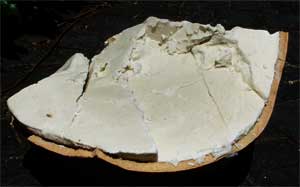 minimal processing - just enough to make the part we seek available. Our wildcrafted shea butter is raw. The nuts are collected and crushed in the simplest way. There is no sophisticated processing - and you can see this in the end product. It's made up of a range of oil compounds, not all of them pure white, and there may even be tiny flecks of husk. Some people treasure the complex scent and the variety of the original constituents. Others prefer one of the more standardised shea butters, pure white and without the raw aroma.
minimal processing - just enough to make the part we seek available. Our wildcrafted shea butter is raw. The nuts are collected and crushed in the simplest way. There is no sophisticated processing - and you can see this in the end product. It's made up of a range of oil compounds, not all of them pure white, and there may even be tiny flecks of husk. Some people treasure the complex scent and the variety of the original constituents. Others prefer one of the more standardised shea butters, pure white and without the raw aroma.
We also have several virgin oils, including tamanu, coconut, hemp, olive and neem. These have had minimal processing, and all have distinctive aromas and tend to be rich and thick.

Cold pressed, unrefined: These oils are close to raw.
Filtering has removed impurities, but they retain their distinctive aromas. We think that our organic argan, cold-pressed organic rosehip, and our New Zealand-grown almond, walnut, hazelnut, and avocado oils are wonderful!
Oils from small producers are generally lightly processed - simple filtering is a purely physical process. These oils contain a wide range of compounds in addition to the saturated and unsaturated oils, including small amounts of vitamins or vitamin precursors, as well as antioxidants and compounds with mild antimicrobial action.
Refining: Oils produced on a larger scale can be standardised to a predictable product by various methods, including:
Selecting the right oil for the purpose...
A way of talking about vegetable/carrier oils
When you are making your own skincare products, you want to tailor the ingredients so that what you make is ideal for your needs. But our everyday language is not very effective when it comes to describing the properties of vegetable oils.
Here is an introduction to one way of talking about cosmetic oils. I will explain some terms, and then show our twelve top-selling oils in a table to summarise their properties.
As often happens in science, everyday words get given precise meanings that are a bit different from our everyday use. It takes a wee while to get used to new terms – yet another shade of meaning for words like ‘long’ and ‘dry’. But these terms give us a new way of thinking about what oil properties we really want in the products we create.
Fatty or dry?
Very fatty oils are rich in saturated fatty acids. At one extreme, neem oil has 40% saturated fatty acids, while avocado oil has 25% and argan oil around 20%.
Almond and apricot kernel oils are about 10% saturated fatty acids.
The saturated fatty acids form a protective layer on the skin, retaining moisture and increasing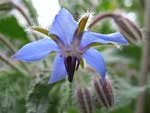 flexibility.
flexibility.
Rosehip oil is towards the dry end of the spectrum, with omega-3 and omega-6 unsaturated fatty acids being more significant. Although dry oils tend to be less soft and smooth, rosehip is an exception. Use it for sensitive and delicate skin when you want to avoid too much fattiness. Borage (pictured) oil also tends to be dry, so combine it with other oils.
Thick or thin?
The technical word for thickness is viscosity. Neem oil and castor oil (high in omega 9 fatty acids) are viscous, and the skin absorbs them very slowly. Castor oil is not only thick, it’s sticky!
Hemp and borage are thin oils, easily absorbed by the skin. Rosehip, jojoba, almond and apricot kernel are also quite thin.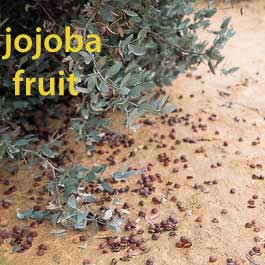
Long or short?
Keep this in mind when blending a massage oil. Long oils spread easily across the skin and don’t soak in too quickly, so they provide good lubrication. Most of the oils on our list are long oils: almond, apricot kernel, avocado and rosehip. Jojoba is very long!
Hemp oil is short, while borage oil is the only very short oil on our list.
Top note / middle note / base note
This perfume terminology adapts nicely to vegetable oils, and gives you a way of thinking about oil combinations.
Top-note vegetable oils are absorbed within minutes of being applied to the skin. They tend to be dry and thin, and high in omega 3 and omega 6 fatty acids. On our list, hemp and borage oils are top-note oils.
Middle-note oils such as almond and rosehip take longer to be absorbed. They are high in omega 7 and 9 unsaturated fatty acids.
Base note oils stay on the skin for quite a long time. Castor oil is the best example on our list.
It’s great to use oils from all three categories when you make a blend or a cream, so you have a wide range of fatty acids, giving a balanced product. However, for skin that is oily, prone to acne or has large pores, keep things light and avoid the base note oils.
Something special about each oil:
Each change of season brings the opportunity to make some new products to care for your skin in changing conditions. We hope you have a great time with your winter creations!
Kind regards
Elinor, Chelsea, & Jacqui
- What's new: New kits, new moulds, Chelsea acting in Dunedin,
Argan/Moroccan oil confusion - Winner of our draw for recipe book and products
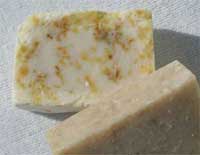
- Substitution: Make your own version of some local products
- Recipes: Tiger balm, Go Native style and Vanilla body butter
- For the inexperienced: Making the most of the website
- What does it mean? Refining...
- Selecting the right oil for the purpose
What's new...
New cold process soapmaking kits:

We have created five new kits with intriguing ingredients:
- eucalyptus and hemp
- calendula and lavender
- lemon and honey
- bentonite clay and lime
- oatmeal and lavender
Mini melt and pour kits:
Our new shell mould needed a kit - so we've made a mini version, which will make three charming shells. The fragrance is palmarosa, which (in my experience) appeals to everyone!
Heart of roses is now available as a mini kit, which makes three gorgeous pink soaps.

New moulds:
Six new soap moulds are arriving any minute. Meet our new favourite, the sheep. We've made him in goatsmilk white, and in black with white face and feet (irresistible!). On the website soon!

Chelsea acting in Dunedin:
Another shameless plug for Chelsea!
For those of you in and around Dunedin in July, think about having night out at the Fortune Theatre and see Chelsea performing in ‘In the Next Room (or The Vibrator Play)’.
Argan oil or Moroccan Oil?
We have a strange new problem: people are thinking that argan oil and Moroccan Oil are the same thing.
But they are quite distinct!
Argan oil is a vegetable oil pressed from the crushed fruit of the argan tree, which grows in south-west Morocco.
Moroccan Oil is a brand (actually spelled Moroccanoil on the label) with products that contain a variety of ingredients (including some argan oil) and are marketed in New Zealand as hair and body care products.
There are other (expensive) products that use 'argan oil' in their name - but it's not clear how much argan oil is in their formulation.
A website offering ‘independent’ advice on Moroccan oil, www.moroccanoilingredients.org,
offers this information:
'The ingredients that are in Moroccanoil products are
cyclopentasiloxane, dimethicone, cyclomethicone, butylphenyl methylpropional, argania spinoza kernel oil, linseed extract, fragrance supplement, Yellow-11, C Red-17, coumarin, benzyl benzoate and alpha-isomethyl ionone.'
(We take no responsibility for the accuracy or otherwise of this list!)
In this list you’ll see argania spinoza. This is argan oil.
Pure, unprocessed argan oil is a very different thing. Argan oil in its natural state is full of nourishment, containing a wide range of vitamins, fatty acids and other ingredients.
Our certified organic argan oil is one of our most popular items, with people appreciating its wonderful moisturising properties and the way it soothes and heals inflamed skin, and keeps hair frizz under control.
We import our argan oil directly from a Moroccan women’s cooperative, and it has had minimal processing. It is quite different from Moroccan Oil!
Be warned! Tell your friends! Go Native organic argan oil is not Moroccan Oil – it is something full of life and liveliness!
 The winner of the draw:
The winner of the draw: The Revive vegetarian cookbook, along with the two babassu butter products and rosehip oil balm featured in our last newsletter, went to a thrilled Adrienne Browne.
'The lotions smell great and feel lovely. And the recipes are vegetarian (how did you know?)'
The delighted winner of Go Native's 'treasure' in The Natural Parent magazine's treasure hunt was Shannon Neill.
Recipe substitution
Ever wondered how to make something you see on the shop shelves?Here I (Elinor) will go through a recipe substitution using Trilogy Everything Balm.
Below is the ingredients' listing on the jar.
(I have added the percentages, see below.)

| % | |
| 1. Cera alba (beeswax) | 15 |
| 2. Sclerocarya birrea (marula) oil (carrier oil) | 15 |
| 3. Olea europaea (olive) oil (carrier oil) | 15 |
| 4. Rosa canina (rosehip) oil (carrier oil) | 15 |
| 5. Oenothera biennis (evening primrose) oil (carrier oil) | 15 |
| 6. Simmondsia chinensis (jojoba) oil (carrier oil) | 15 |
| 7. Tocopheryl acetate (vitamin E, an antioxidant) | 3 |
| 8. Triticum vulgare (wheat) germ oil (carrier oil) | 3 |
| 9. Mel (honey) | 3 |
| 10. Parfum, citral, citronellol, coumarine, geraniol, linalool (essential oil constituents) | 1 |
| total | 100 |
Labelling rules require ingredients to be listed in volume order, which means that, in this case, beeswax accounts for the major part of the ingredients.
Balms are often made with 15% beeswax and 85% oils, so I will give beeswax a 15% volume.
Ingredient 7 is vitamin E which used at between 1% and 3%. Let’s give it 3%.
So now everything below vitamin E (8, 9, 10) has to be 3% or less.
10 is a bunch of essential oil constituents (from lavender oil so the label says).
So we’ll keep it simple and use lavender oil. Fragrance is normally used at 0.5%.
I’ve given it 1% for reasons that hopefully will become clear soon!
8 and 9 have to be between 0.5 and 3%. I’ve given them 3% each.
Now the main carrier oils, 2, 3, 4, 5, 6, are left.
All our percentages have to add up to 100, so we have 75 left. Again, keeping it simple, we’ll give them 15% each.
I had to give the essential oil 1% to make up the 100%. However, I wouldn’t put 1% in. A few drops are all that’s required for a 100g quantity.
So now we have a recipe that will make 100g of, let’s call it, Go Native All-purpose Balm!
Go Native All-purpose Balm

15g beeswax
15g marula oil
15g olive oil
15g rosehip oil
15g evening primrose oil
15g jojoba oil
3g vitamin E
3g wheatgerm oil
3g honey
few drops lavender essential oil
Now you can make it and see how it goes.
Remember to keep notes on what you did.
-------------------------------------------------------
Recipes
Tiger Balm - Go Native style (Makes 100g)

42g olive oil
12g beeswax
11g camphor essential oil
10g menthol crystals
7g cajeput essential oil
6g peppermint essential oil
6g clove bud essential oil
6g cassia essential oil
Heat the olive oil and beeswax gently in a pot.
When melted, add the menthol crystals and stir until they dissolve. Now add the rest of the essential oils, stir and pour into pots.
NB: Don't overheat. Some of these essential oils have a low flashpoint and will 'flash' if they get too hot. It's scary, so please take care.
Vanilla Body Butter (Makes 200g)
Water Phase
83g Water
3g Glycerin
Oil Phase
55g Olive oil
15g Beeswax
10g Almond oil
10g Emulsifier (Emulsifier O)
7g Jojoba oil
5g Argan oil
3g Castor oil
3g Shea butter
3g Cocoa butter
Last Phase
2g Preservative (Geogard 221)
6d Vanilla flavouring
Method
Pour Oil Phase ingredients into a saucepan and gently melt. Take the pan off the heat as soon as the ingredients are melted.
In a different saucepan heat the Water Phase ingredients until very small bubbles form. Take the pan off the heat. No more heat is required.
Pour the Oil Phase ingredients into the Water Phase ingredients and whisk with a blender until the mixture is thick. Be sure to scrape the sides of the pan to incorporate the mixture there.
When it is warm to touch add the Last Phase ingredients and blend until completely mixed. The mixture won’t thicken until it is reasonably cool, just above room temperature, so don’t give up!
Spoon into containers.
Navigating our website - helpful hints for the inexperienced
Last time we mentioned that you can buy oils and ingredients in sizes to suit, whether you are buying some argan oil to put directly on your skin, or making moisturiser to sell at the local market. Many of you are new to our newsletter, so here's how to access different sizes.

Not sure how to order quantities other than the one you can see?
Just click on the white bar to see the other sizes available for this product.
Just click on the white bar to see the other sizes available for this product.

And on the left, you can click on the name of the product to see background information about it.
 Going to Login before you begin entering an order means that your details are already filled in when you come to check out. Quick and easy.
Going to Login before you begin entering an order means that your details are already filled in when you come to check out. Quick and easy.Next time you order, choose Login from the navigation bar to see this window.
If it's the first time you've been here, click on create an account under Sign up for free. Then you will see the form on the right - and you can fill in your details (and never have to do it again)!

Enter your email address as your username, then enter your password - twice.
Then enter your name and address etc. When entering your details, you can leave some boxes empty.
(We've put it here so it will look familiar when you give it a go...)
When you get to the bottom, click on the white [Create Account].
Returning? Remember that if you have forgotten your password, you can click on Forgotten your password? and request that it is emailed to you.
If you know that you have created a login but it's not working, try your email address if you have one...
...and if all else fails, email me at jacqui@gonative.co.nz!
What does it mean?
Refining oils and butters from nuts and seeds and plants...
In our last newsletter, we looked at ways of extracting oils. This time we'll talk about some of the terms used in processing oils and butters.
Raw: Think of eating raw fruit. You bite through the skin into the apple's flesh, or peel back banana skin before munching on the contents. In skincare terms, a raw product has had
 minimal processing - just enough to make the part we seek available. Our wildcrafted shea butter is raw. The nuts are collected and crushed in the simplest way. There is no sophisticated processing - and you can see this in the end product. It's made up of a range of oil compounds, not all of them pure white, and there may even be tiny flecks of husk. Some people treasure the complex scent and the variety of the original constituents. Others prefer one of the more standardised shea butters, pure white and without the raw aroma.
minimal processing - just enough to make the part we seek available. Our wildcrafted shea butter is raw. The nuts are collected and crushed in the simplest way. There is no sophisticated processing - and you can see this in the end product. It's made up of a range of oil compounds, not all of them pure white, and there may even be tiny flecks of husk. Some people treasure the complex scent and the variety of the original constituents. Others prefer one of the more standardised shea butters, pure white and without the raw aroma.We also have several virgin oils, including tamanu, coconut, hemp, olive and neem. These have had minimal processing, and all have distinctive aromas and tend to be rich and thick.

Cold pressed, unrefined: These oils are close to raw.
Filtering has removed impurities, but they retain their distinctive aromas. We think that our organic argan, cold-pressed organic rosehip, and our New Zealand-grown almond, walnut, hazelnut, and avocado oils are wonderful!
Oils from small producers are generally lightly processed - simple filtering is a purely physical process. These oils contain a wide range of compounds in addition to the saturated and unsaturated oils, including small amounts of vitamins or vitamin precursors, as well as antioxidants and compounds with mild antimicrobial action.
Refining: Oils produced on a larger scale can be standardised to a predictable product by various methods, including:
- centrifuge filtering, used to remove heavier or lighter compounds
- passing through hot water to precipitate out substances that are dissolved in the oil, but are not soluble in water
- bleaching – adding compounds such as bentonite clay which absorb coloured components
- deodorising, by treating with pressurised steam
Selecting the right oil for the purpose...
A way of talking about vegetable/carrier oils
When you are making your own skincare products, you want to tailor the ingredients so that what you make is ideal for your needs. But our everyday language is not very effective when it comes to describing the properties of vegetable oils.
Here is an introduction to one way of talking about cosmetic oils. I will explain some terms, and then show our twelve top-selling oils in a table to summarise their properties.
As often happens in science, everyday words get given precise meanings that are a bit different from our everyday use. It takes a wee while to get used to new terms – yet another shade of meaning for words like ‘long’ and ‘dry’. But these terms give us a new way of thinking about what oil properties we really want in the products we create.
Fatty or dry?
Very fatty oils are rich in saturated fatty acids. At one extreme, neem oil has 40% saturated fatty acids, while avocado oil has 25% and argan oil around 20%.
Almond and apricot kernel oils are about 10% saturated fatty acids.
The saturated fatty acids form a protective layer on the skin, retaining moisture and increasing
 flexibility.
flexibility.Rosehip oil is towards the dry end of the spectrum, with omega-3 and omega-6 unsaturated fatty acids being more significant. Although dry oils tend to be less soft and smooth, rosehip is an exception. Use it for sensitive and delicate skin when you want to avoid too much fattiness. Borage (pictured) oil also tends to be dry, so combine it with other oils.
Thick or thin?
The technical word for thickness is viscosity. Neem oil and castor oil (high in omega 9 fatty acids) are viscous, and the skin absorbs them very slowly. Castor oil is not only thick, it’s sticky!
Hemp and borage are thin oils, easily absorbed by the skin. Rosehip, jojoba, almond and apricot kernel are also quite thin.

Long or short?
Keep this in mind when blending a massage oil. Long oils spread easily across the skin and don’t soak in too quickly, so they provide good lubrication. Most of the oils on our list are long oils: almond, apricot kernel, avocado and rosehip. Jojoba is very long!
Hemp oil is short, while borage oil is the only very short oil on our list.
Top note / middle note / base note
This perfume terminology adapts nicely to vegetable oils, and gives you a way of thinking about oil combinations.
Top-note vegetable oils are absorbed within minutes of being applied to the skin. They tend to be dry and thin, and high in omega 3 and omega 6 fatty acids. On our list, hemp and borage oils are top-note oils.
Middle-note oils such as almond and rosehip take longer to be absorbed. They are high in omega 7 and 9 unsaturated fatty acids.
Base note oils stay on the skin for quite a long time. Castor oil is the best example on our list.
It’s great to use oils from all three categories when you make a blend or a cream, so you have a wide range of fatty acids, giving a balanced product. However, for skin that is oily, prone to acne or has large pores, keep things light and avoid the base note oils.
| oil | dry/fatty | viscosity | sticky? | massage | note |
| Hemp | dry | thin | short | top |
|
| Borage | dry | thin | short | top |
|
| Rosehip | dry | thin | long | middle |
|
| Jojoba | dry-ish | thin | non-sticky | very long | middle |
| Almond | fatty-ish | thin | long | middle |
|
| Apricot kernel | fatty-ish | thin | long | middle | |
| Avocado | fatty-ish | thin | long | middle |
|
| Argan | fatty-ish | thickish | middle |
||
| Olive | fatty | long | base |
||
| Macadamia | fatty | thickish | stickyish | short | base |
| Tamanu | thickish | short | base |
||
| Castor | thick | sticky | short | base |
Something special about each oil:
| Hemp | Rapidly absorbed, so good for ‘carrying’ other active substances into the skin |
| Borage | Useful for acne, eczema and psoriasis, as it is high in GLA (gamma linolenic acid) |
| Rosehip | Helps repair damaged skin and wrinkles; contains vitamin A precursors |
| Jojoba | The best skin and hair protector; great in massage blends Composition similar to human skin sebum |
| Almond | Mild and versatile, sweet almond oil has been used on skin for thousands of years |
| Apricot kernel | Ideal for sensitive skin that’s not oily Great in massage blends. |
| Avocado | Protects skin from wind and weather |
| Argan | Regenerating and healing; great for mature skin |
| Olive | An excellent base for protective formulations |
| Macadamia | Regenerative for mature skin Very safe and protective in baby products |
| Tamanu | Helps heal scars and stretch marks |
| Castor | Absorbed very slowly, so great in cleansers |
Each change of season brings the opportunity to make some new products to care for your skin in changing conditions. We hope you have a great time with your winter creations!
Kind regards
Elinor, Chelsea, & Jacqui
